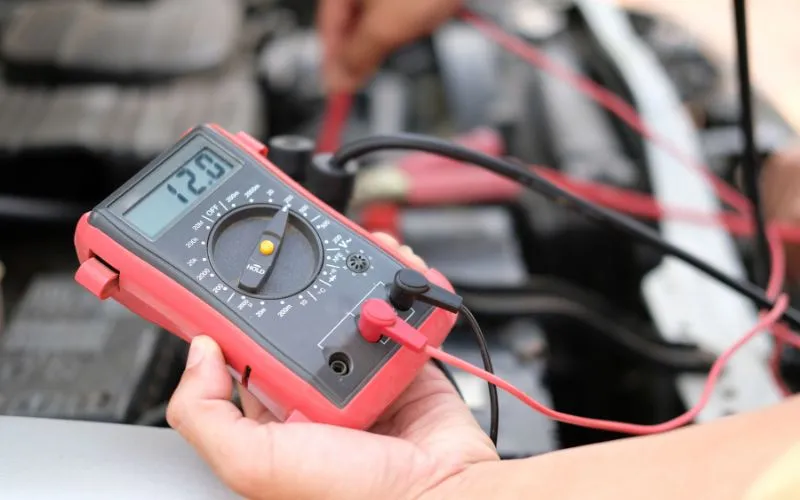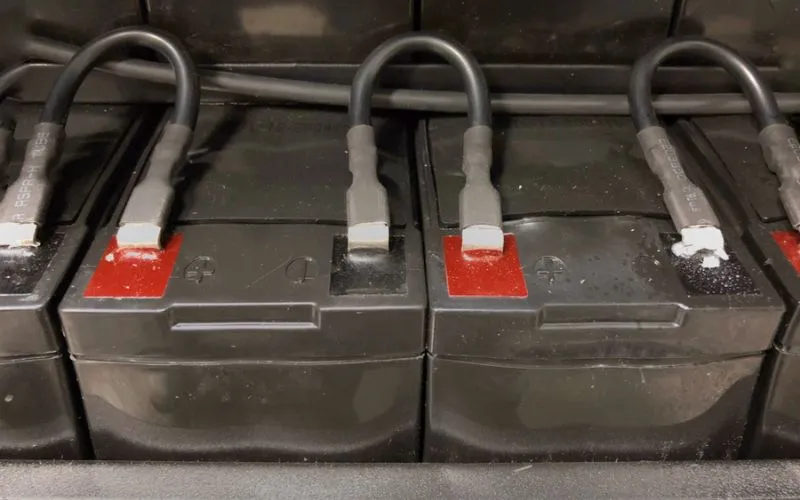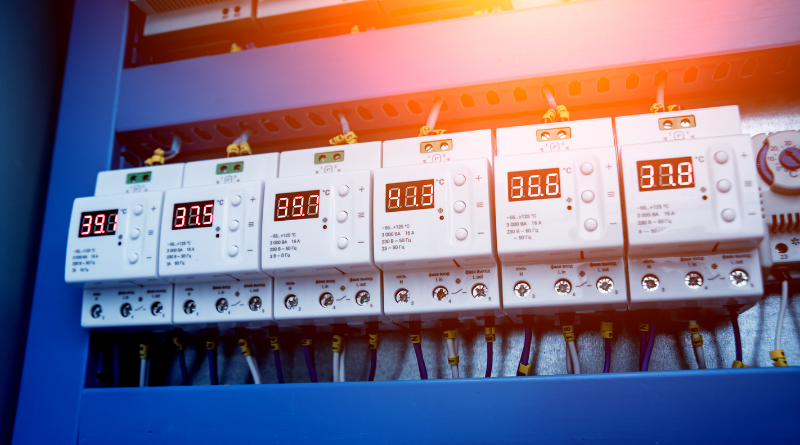
Voltage spikes or surges are a common electrical phenomenon that can significantly impact residential and industrial electrical systems. In this article, we will delve into the complexities of power surges and explore their causes, effects, and viable solutions to mitigate their impact.
What is a voltage surge?
A voltage spike is a temporary increase in the voltage level of a power supply beyond the normal range. This deviation can last from milliseconds to several seconds due to several factors. Understanding power surges is critical because they can damage equipment, cause operational disruptions and even pose safety risks.
Causes of voltage spikes

Voltage spikes can be caused by various factors internal and external to the electrical system. Here are some of the main causes:
Switching operations
Switching operations in the electrical network, such as opening or closing circuit breakers, can lead to sudden voltage spikes. These processes are essential to maintain grid stability, but can lead to short-term overvoltages.
Lightning strikes
One of the best-known causes of voltage spikes is lightning. Lightning can introduce a large wave of electricity into the grid, causing brief voltage spikes. While lightning rods can help mitigate this, they cannot eliminate the risk.
Faults in the electrical system
Faults in the power distribution system, such as short circuits or ground faults, can also cause voltage spikes. These errors can cause disturbances in voltage levels and affect the overall stability of the system.
Reactive power compensation
Reactive power compensation devices such as capacitors and inductors can inadvertently cause voltage spikes when turned on or off. To effectively manage these voltage spikes, appropriate control mechanisms are necessary.
Load fluctuations
Rapid changes in electrical load, such as sudden starting of large motors or devices, can cause voltage spikes. These fluctuations in demand can overload the system and cause voltage deviations.
Effects of voltage spikes

Voltage spikes can negatively impact electrical systems, devices and operations. Understanding these consequences is fundamental to developing effective solutions:
Equipment damage
One of the biggest concerns associated with power surges is equipment damage. Overvoltage can cause stress on electrical components and lead to premature failure or reduced service life. This can result in costly repairs and replacements for residential and industrial users.
Data loss
In today's digital age, voltage spikes can put sensitive electronic devices at risk. During sudden power surges, data centers, servers, and computers are vulnerable to data loss or corruption. Uninterruptible power supplies (UPS) can help mitigate some of this risk.
Operational interruptions
Voltage spikes can interrupt industrial processes and operations. Manufacturing equipment, automated systems and production lines can fail due to electrical failures, resulting in lost productivity and potential financial losses.
Security risks
Outbreaks can pose safety risks in various environments. In residential environments, for example, overvoltage can damage household appliances or even pose a risk of fire. In industrial environments, it can threaten worker safety and process integrity.
Financial impact
The financial consequences of voltage spikes should not be underestimated. Repairing or replacing damaged equipment and the costs associated with downtime can put a strain on homeowners' and businesses' budgets.
Reduction of voltage peaks

Fortunately, several strategies and technologies are available to mitigate the effects of power surges:
Voltage regulator
Voltage regulators ensure a stable output voltage regardless of input voltage fluctuations. They can be installed at critical points in an electrical system to ensure voltage levels remain within acceptable limits.
Overvoltage protection
Surge protectors or surge limiters are essential for protecting sensitive electronic devices from voltage spikes. These devices divert excess voltage to a ground wire, preventing it from reaching connected devices.
Uninterruptible Power Supply (UPS)
UPS systems provide a temporary source of power during power surges or brownouts. They can provide critical backup power to sensitive equipment, allowing users to safely shut down systems or continue operations until normal power is restored.
Voltage monitoring
Continuous monitoring of voltage levels is essential to detect voltage spikes. Modern monitoring systems can automatically trigger alarms or corrective actions when abnormal voltage conditions are detected.
Power quality assessment
An assessment of the power quality of your electrical system can help identify possible sources of power surges. This proactive approach allows you to implement targeted solutions to solve specific problems.
Strength of voltage increase

A voltage rise is defined as an increase of between 1.1 and 1.8 Pu in the effective current or voltage at the grid frequency for a period of 0.5 cycles to one minute. As mentioned, a voltage increase is characterized by its magnitude, which is usually expressed as root mean square. The size of a voltage rise can vary in the range of 1.1 to 1.8 Pu. Pu means per unit value, a normalized measurement used in power systems to express quantities relative to a reference value.
Reasons for voltage spikes
Although voltage spikes occur less frequently than voltage sags, they can occur for a variety of reasons. Understanding these causes is fundamental to effective mitigation.
Swelling in disturbing conditions
Sometimes power spikes can be related to system error conditions. One scenario in which a voltage spike can occur is a line-to-ground short circuit (SLG). During an SLG fault, the voltage on the healthy phases may experience a short-term increase, resulting in a voltage spike. This phenomenon is shown in the figure above.
Swelling due to load and capacity
In addition to fault conditions, voltage spikes can also occur when switching operations involve an oversized load or when a large capacitance bank is activated. These actions can lead to temporary increases in tension.
Factors that affect the severity of stress increase

The severity of a voltage increase during a fault condition may depend on several factors:
Fault location
The location of the fault in the electrical system plays an important role in determining the extent of the voltage increase. Different fault locations can lead to varying degrees of voltage deviations in the fault-free phases.
System Impedance
The impedance of the electrical system also influences the magnitude of voltage peaks. Higher impedance systems are more susceptible to voltage fluctuations during fault conditions.
Grounding Configuration
The system grounding configuration is a critical factor. In ungrounded systems with infinite zero impedance, phase-to-ground voltages on the fault-free phases can reach 1.73 Pu during an SLG fault condition. However, in low-impedance zero-path grounded systems, the voltage rise in healthy phases close to the substation may be minimal.
Troubleshooting four-wire power lines
The location of the fault can lead to different voltage peaks on the fault-free phases in front-grounded four-wire power lines. These fluctuations are influenced by the power line configuration and the impedance characteristics of the system.
Terminology: Short burst
It is worth mentioning that several authors use the term “short surge” as an alternative expression for the word “voltage increase”. This terminology describes the temporary increase in voltage levels during certain electrical events, such as those mentioned above.
Conclusion
In summary, voltage surges are a complex phenomenon in electrical systems characterized by temporary increases in voltage. They can have a variety of causes, including switching operations, lightning strikes and system errors, and their effects can range from equipment damage to operational disruptions. To address these challenges, a range of protective measures, including voltage regulators, surge protectors and uninterruptible power supplies, are available to protect electrical infrastructure. Understanding the magnitude and factors that influence outbreaks is critical to comprehensive mitigation efforts. Through careful monitoring and the use of appropriate solutions, the negative impact of power surges can be minimized, ensuring the uninterrupted operation of electrical systems and reducing the financial burden arising from damage and equipment downtime.

